






BUILDING YOUR INNATE SYSTEM’S ABILITY TO WARD OFF INFECTIOUS DISEASE (IN AND OUT OF A PANDEMIC)

AROUND INFECTIOUS DISEASE
Staying informed about the spread of COVID19- and the measures that you can take to protect your health and the health of your loved ones is critical. However, spending too much time researching coronavirus can negatively impact your sense of wellbeing and compromise your physical health. Reports often contain words like outbreak, pandemic, and quarantine that can stir up a lot of anxiety — and even panic. Growing uncertainty about the virus’s impact in the US has

many people feeling worried or stressed. While the concern is warranted, it detracts from what is most important: staying healthy.
Did you know that chronic stress and anxiety can actually make you more likely to catch a cold or become ill? It’s no surprise that stress has negative impacts on a person’s health; after all, no one likes to be stressed! But reducing stress isn’t just good for your mental health, it also improves your body’s immune response.
Why Stress Matters for Immune Function
In modern life, stress can feel constant and omnipresent. The human body perceives and responds to stress both psychologically and physiologically. Stressful events can cause emotional feelings of unhappiness or being overwhelmed. Often, stress is accompanied by very real physical reactions: hormones that send signals throughout the nervous system. When the body is Stress, immunity, and disease progression have reciprocal relationships. A powerful way for you to reduce your risk and stay healthy is to practice stress management techniques, which researchers suggest have potentially

© 2021 DR. KEESHA EWERS 2 www.DrKeesha.com


SIX STRATEGIES TO REDUCE STRESS
Reducing stress can improve your overall health, especially during these uncertain times. Try a few of these mindfulness and stress management techniques to help support your immune system.
Avoid Information Overload
While it can be tempting to hunt for all of the available information, emerging research may contain errors or inaccuracies that will be addressed over time. Even experts recognize that they don’t know enough about emerging infectious diseases. By taking a deep breath and acknowledging that no one has all the answers, you can avoid unwanted stress and anxiety.
Practice Gratitude
In times of uncertainty and worry, negative
help your mind remember the positive elements of your life and, if your gratitude is shared, may
Set appropriate boundaries for researching the coronavirus by limiting yourself to 30 minutes per day.
Write an email, text, or letter to someone who has had a positive impact on your life.
Keep a running list of things you are grateful for on a daily basis.
Try Meditating
For some people, daily mindfulness meditation has an enormous positive impact not only on mental health but also on physical health.

There are many free videos and apps for mindfulness meditation; experiment to
one of the most researched methods using the Stress Busting Tool Kit.
© 2021 DR. KEESHA EWERS 3 www.DrKeesha.com
TIP TIP TIP TIP

Create a Homecoming Routine
Make it a habit to wash your hands as
step. Afterward, create a comfortable environment in your home that washes away the stress of your day.
Celebrate Good Habits
Light a candle (or use an essential oil bring you happiness.
able to make positive change in your daily habits, take a moment to recognize yourself. Whether that’s eating a new vegetable every day, adding a D vitamin to your routine, or adopting elbow-to-elbow greetings, take a moment be positive.
Exercise
In addition to distracting you from anxiety, exercise also changes your brain function and can decrease stress. Exercise can increase expression of feel-good neurotransmitters like serotonin.
Whether you love to dance, hit a punching bag, movement throughout the day tied to your routines, such as dancing while boiling water or doing lunges while brushing your teeth.
Thoughts about COVID19- may be overwhelming for some. If you or someone you know begins to exhibit depressive symptoms or has thoughts of suicide, please call the National Suicide Prevention Lifelife suicidepreventionlifeline.org at 1-800-273-8255 . Crisis counselors are available 24/7 experiencing emotional distress or crisis.

4
TIP TIP
TIP
TIP
www.DrKeesha.com © 2021 DR. KEESHA EWERS
TIP


JUST BREATHE…
Oxygen is more important than water. The COVID19- and SARS viruses impact the lungs more than any other organ in the body. Breath becomes an essential variable when preventing infections. The sciences of yoga and Ayurveda placed a great emphasis on breath 10,000 years ago and we can learn from those ancient
Never has it been more important than now to consciously breathe. Conscious breath work can be engaged to heal a number of issues outside of viral pandemics, such as hypothyroidism, obesity, fatigue, and digestive problems. Following are some therapeutic breathing exercises I would encourage


www.DrKeesha.com © 2021 DR. KEESHA EWERS 5


PRANAYAMA
PRACTICE
Bhastrika (Bellows Breathing)
Bahi Pranayama (Breath Retention)
Kapal Bhati (Cleaning Breath)
Anuloma-Viloma (Alternate Nostril Breathing)
Agnisara (Breath of Fire)
Bhramari (Bumble Bee Breathing)
Utjayi (Loud or Ocean Breath)
Utgeet (OM)
Shitali (curled tongue breathing)

Begin with 10 rounds, advancing weekly by tens to 50
Begin with 1 round between each set of 10 Bhastrikas.
Begin with 50 rounds, advancing by 50 to 500
Begin with 10 rounds, advancing by 10 to 50
Begin with 10 rounds, advancing to 20.
Begin with 7, advancing by 7 to 21
Begin with 7, advancing by 7 to 21.
Begin with 16 rounds, advancing by 16 until you reach 1000.
Begin with 10 and do more in the summer months when pitta is up. 1 2 6 4 8 3 7 5 9 Do morning and evening before meditation
This practice will heal ANYTHING. It will relieve depression, cause weight loss, and increase vital energy (also known as prana, chi, and ki) belief will start with an "I am"statement.

© 2021 DR. KEESHA EWERS 6
www.DrKeesha.com

1
Bhastrika (Bellows)
Bhastrika primarily consists of forced rapid deep breathing. Although air is forced both in and out, the emphasis is placed on exhalation.
A “round” consists of 10 expulsions.
It is advisable practice pranayama in a seated position in order to allow maximum relaxation of the abdominal muscles and easy diaphragmatic breathing.
2
Bahi Pranayama

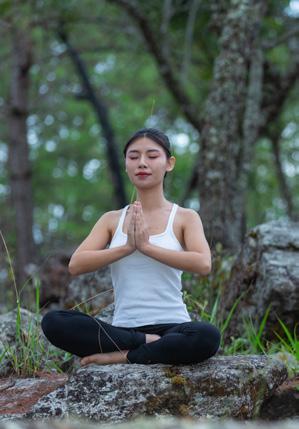
retention of the breathing process after exhalation of breath and applying mahabandha.
of prana). There are three bandhas: Jalandhur Bandha (touching the chin to chest), Uddiyana Bandha (pulling the stomach in so as to touch the back)) and Mula bandha (pulling up the perineum by contracting the anus and tightening the lower abdomen). In Mahabandha all three are applied together.
lobes up; making sure to engage the diaphragm.
Then breathe out with full force and hold, simultaneously applying mahabandha.
Maintain this position until you feel like inhaling again. Now release the locks and exhale.
negative toxins and energy being exhaled each time you exhale.

© 2021 DR. KEESHA EWERS 7
www.DrKeesha.com

Kapalabhati (Skull Cleansing Breath)
Kapalabhati is a breathing technique
is short, rapid, and strong. The lungs are used as a pump, creating so much pressure as they expel the air that all the waste is removed from the air passages, from the lungs up through the nostrils. Kapala means "skull," and bhati means "that which brings lightness." Kapalabhati is a good thing to do when we feel heavy or foggy in the head. If we have problems with the sinuses or feel numb around the eyes, Kapalabhati can help to clear this area as well.


One Round:
1. Take two normal breaths. Inhale.
2. Now exhale, pulling in your abdomen.
3. Repeat, keeping a steady rhythm and emphasizing the exhalation each time for 50 breaths. Then inhale, exhale completely, inhale fully and hold your breath for as long as you comfortably can. Slowly exhale.
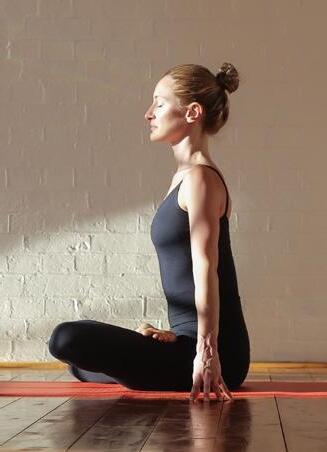
www.DrKeesha.com © 2021 DR. KEESHA EWERS 8
3

Alternate Nostril (Anuloma Viloma)
Anuloma Viloma is also called the Alternate Nostril Breathing Technique. In this Breathing Technique, you inhale through one nostril, retain the breath, and exhale through the other nostril in a ratio of 2:8:4 (this becomes clear below).
The left nostril is the path of the Nadi called Ida and the right nostril is the path healthy, you will breathe predominantly through the Ida nostril about one hour natural rhythm is disturbed. Anuloma Viloma restores, equalizes and balances
One round of Anuloma Viloma is made up of six steps, as shown below. Start by practicing three rounds and build up slowly to twenty rounds, extending the count within the given ratio.

the left nostril closed with the ring and
Hold the breath, closing both nostrils, to the count of sixteen.
Exhale through the left nostril, keeping the right closed with the thumb, to the count of eight.
Inhale through the left nostril, closing the right with the thumb, to the count of four.
to the count of sixteen. to the count of eight.

The exercise of the Anuloma Viloma produces optimum function to both sides of the brain: that is optimum creativity and optimum logical verbal activity. This will make both sides of the brain, the left side which is responsible for logical thinking and the right side which is responsible for creative thinking to function properly. This will lead to a balance between a person's creative and logical thinking.

4 www.DrKeesha.com © 2021 DR. KEESHA EWERS 9

Agni Sara (Breath of Fire)
Agni Sara cures all digestive diseases, a luminous body.
1. Stand with your feet about two feet apart and your knees slightly bent. Keeping your spine straight, bend forward at the waist, and place the palms on the thighs just above the knees, with the thumbs pointing down. Keep the arms straight, and rest the weight of the upper torso on the thighs. The posture should be comfortable, and the abdominal muscles should be relaxed.
2. Exhale smoothly and steadily, focusing on contracting the muscles in the lower abdomen/pelvic region.
3 Continue exhaling, moving the contraction upward in a wave-like motion, and focusing at or above the navel, retain the exhalation.
4. Apply the chin lock and perform uddiyana bandha. Continue the smooth inward and upward movement of the abdominal wall. When the full upward motion is achieved, immediately reverse the motion, smoothly releasing the abdominal lift only to the point where uddiyana bandha began.
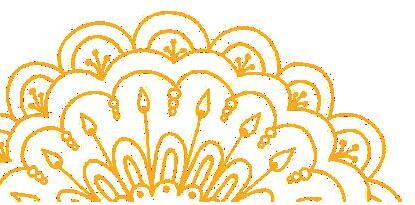
5. Begin inhaling gently, without gasping, slowly releasing the muscles and release the abdominal wall downward and outward.
6. Continue inhaling while releasing the lower abdominal muscles.
Release the root lock near the end of the inhalation. This is the starting position; the abdominal muscles should be relaxed.
7. Repeat steps 1 to 6 without pausing.
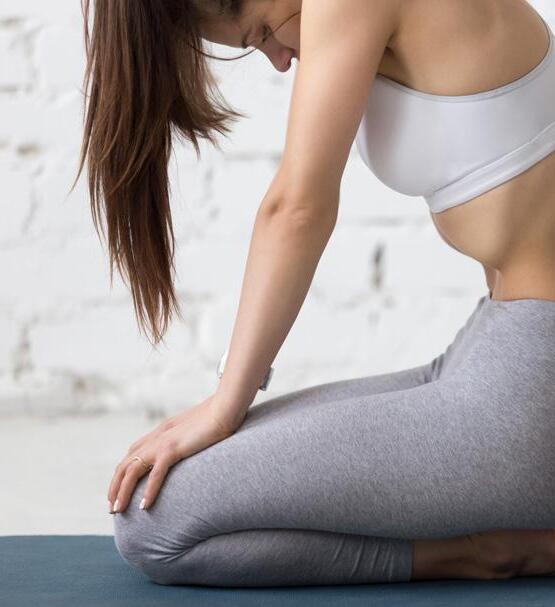
© 2021 DR. KEESHA EWERS 10
5


7
Ujjayi (The "loud breathing")
Ujjayi translates as "what clears the throat and masters the chest area." This partial closure of the glottis produces a sound like that heard in sobbing, except that it is continuous and unbroken. The sound should have a low but uniform pitch and be pleasant to hear.
Draw air in through both nostrils with the glottis held partially closed.
Use the chin lock while holding the breath and hold as long as possible.
Exhale smoothly and slowly through the left nostril with the glottis partially

Bhramari (Bumblebee breath)
Bhramara means a bumble bee. This
resounding sound produced like the bumble bee, during exhalation.
With full inhalation, place both of your thumbs of the hands inside the ears so as to close them.
each on both sides of the nose.
Slightly pressing the sides of the nose
nostrils, while chanting OM from the nose, making a humming sound like a bee.
closed as in inhalation. One may begin to exhale with release of air pressure
loosening the chin lock, and then partially opening the glottis. Exhalation should be complete.
Exhalation should be about twice as long as inhalation.
The pause between inhalation and exhalation can be extended to a duration which is double that of the inhalation or equal to that of the exhalation. Advanced practitioners of yoga hold their pauses to four times the duration of inhalation and double the duration of exhalation.
© 2021 DR. KEESHA EWERS 11
6 www.DrKeesha.com

Utgeet (OM chanting)
Inhale fully
Slowly lean forward in sitting position while saying OM on the exhale. Draw head back and down into chin lock and hold until inhalation necessary. Sit straight up, inhale, and repeat.
Shitali (curled tongue breathing)
Begin with 10 and do more in the summer months when pitta is up.


8
www.DrKeesha.com © 2021 DR. KEESHA EWERS 12
9


G OOD SLEEP HYGIENE
HELPS PROTECT AGAINST INFECTIOUS DISEASES
local communities is causing anxiety on a global scale.
a leading cause of sleep dysfunction, and not getting
Sleep plays a powerful role in supporting healthy immune system function; in fact, these two things are closely connected. A lack of sleep can increase the likelihood of infection. Illness can disrupt your sleep further, which in turn slows down your recovery time.
unexpected illness and getting enough of it supports your overall health and well-being.
Sleep and Immune Function
against infectious disease. During sleep, your body produces proteins called cytokines you are exposed to infectious pathogens, have
body increases production of these cytokines
immune response, for instance, by increasing the risk of catching the common cold, so not getting enough sleep impacts your body’s
Sleep disturbances are linked with early stages of infection, and irregular sleep patterns could illness. Lack of sleep could slow down your immune response and allow illness to progress further. If you are already feeling sick, the age-old advice to “get lots of rest” may be the best approach to bolster your immune
both preventive and restorative; experts recommend between seven to nine hours of sleep every night for optimal health.

Healthy Sleep Habits
Sleep is critical to healthy immune system function, yet the Centers for Disease that one third of Americans don’t get enough sleep every night. For many people, practicing better sleep hygiene is a simple and achievable way to improve the quality of their sleep.
According to the National Sleep Foundation, sleep hygiene involves routines and practices that lend to quality nighttime sleep.
Good sleep hygiene doesn’t just mean sleeping with clean sheets, it also involves routines that help facilitate the body’s circadian rhythm and reduce environmental slumber. Simply knowing how certain help you adjust your daytime behaviors to improve sleep later. You can support your sleep and your health just by making positive changes in your daily routine.
© 2021 DR. KEESHA EWERS 13 www.DrKeesha.com

Maintain a consistent sleep schedule. Go to bed and wake up around the same time every day — even on the weekends.
Take in more daylight and limit
Daylight reinforces the ‘awake’ phase of your body’s sleep cycle, so spending more time outside during the day can make it easier for you to fall asleep at night. If you are inside most of the day, try to sit close to a window or take breaks outside when you can. In the evening, spend less time with electronics. Blue light from back-lit devices like cell phones, computer monitors, and tablets mimics daylights and stimulates alertness. Using electronics before bed tricks your body into thinking it’s still daytime and can make it harder for you to fall asleep. Limit your use of electronics at least one hour before bedtime.
Stay active.
Exercising during the day helps you feel alert and promotes better sleep at night. Strenuous activity at night, however, can make it harder to fall asleep. Give yourself plenty of time between
down before bed.

What you eat and when you eat it could be holding you back from a restful night’s sleep. Try to avoid large meals before bed and limit your consumption of alcohol and pot. While it may help you fall asleep, alcohol and weed can cause you to wake up more frequently during the night.
six hours prior to bedtime.
Take time to unwind.
Stress Busting Tool Kit and engage in light stretching before bed as a way to reduce stress or anxiety.
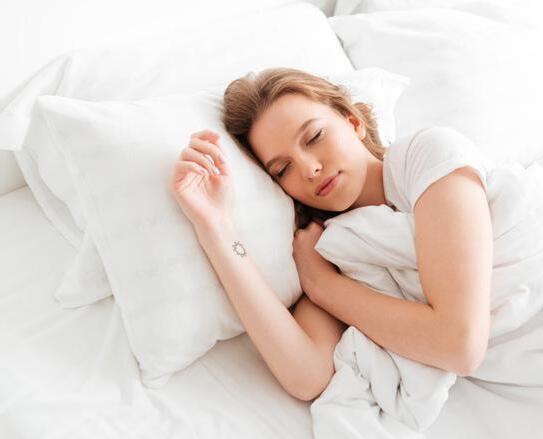


Improve your sleep environment. Your bedroom could be preventing you from quality sleep. Check out the tips below for turning your room into a sleep haven.
www.DrKeesha.com
© 2021 DR. KEESHA EWERS 14

Research on how to best improve sleep is still in progress, so for the
When to Talk to Dr. Keesha About Trouble Sleeping
Everyone experiences trouble sleeping from time to time. However, chronic disturbances or insomnia could be caused by underlying health conditions or lead to other health concerns down the road. If you see no improvement in the quality or duration of your sleep, you may want to talk with Dr. Keesha, particularly if you are waking up frequently during the night or not feeling rested in the mornings, or if your partner complains of excessive snoring. Healthy sleep is important; proper sleep may help you maximize your zzz’s and minimize your risk for illness.

© 2021 DR. KEESHA EWERS 15 www.DrKeesha.com


ESTABLISHING A HEALTHY
SLEEP ROUTINE

Leptin is a hormone important for weight control and blood sugar balance. It is only one of several hormones that are dependent on the amount of sleep you get each night. If you sleep less than 5 hours your leptin decreases. If you your leptin increases.
Your liver detoxes at night. Sleep is an essential component of any program





































































aimed at healing the adrenal hormone balance and repairing the systems of the body; from the gut to the brain.
Any adrenal supplement program helps to re-set your sleep rhythm and cycles. However, supplements cannot do it alone.
Begin to do what Ayurvedic medicine has advised for 10,000 years. Follow a daily routine that includes going to bed at the same time each night and getting up at the same time each morning. It doesn’t matter if it’s the weekend or a workday.
© 2021 DR. KEESHA EWERS 16
www.DrKeesha.com


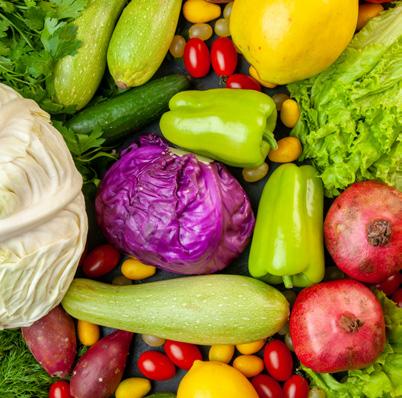
If you are waking up because you can’t breathe (or your sleep partner is telling you your breathing stops in the night and you snore like a freight train), get a sleep study done. There are now simple dental appliances that can assist sleep apnea.
Don’t turn on the light if you get up to go to the bathroom.
DIET
If you have food allergies or toxicity, an elimination diet to determine if something simple like gluten is making you snore or creating sleep apnea.

Don’t take naps.
Get at least 30 minutes of outdoors time (even if it’s not sunny).
Bad bugs mean bad sleep. If your gut has an overgrowth of yeast or bacteria or parasites, you will not be getting the rest you need. A stool test can show this and treatment can begin so you can begin to get the rest you need.

© 2021 DR. KEESHA EWERS 17 www.DrKeesha.com
SLEEP APNEA FIX YOUR GUT

SLEEP HYGIENE BRAIN TRAINING


Don’t bring screens to bed and don’t watch TV in bed. The blue in your electronic screens interferes with melatonin (sleep hormone) production. Resist sending those last emails or watching a violent movie while in bed. One of the worst barriers to sleep is watching the nightly news.
If you are not tired after you have gone to bed, get out of bed and go into another room to meditate. Don’t turn on the light. Consuming any of these will create a spike and then a fall in your blood sugar that can wake you up later into the night.
Even though a nightcap may help you relax and fall asleep faster, it’ll make the second half of your sleep cycle restless and unsatisfying. Alcohol decreases deep sleep and increases arousals from sleep.
Do not read or do any activity that causes mental stimulation one hour before bedtime. The best activity is meditation or another contemplative exercise, reading a book that is NOT mentally stimulating, and/or sex.



www.DrKeesha.com © 2021 DR. KEESHA EWERS 18



Write down any notes for things you don’t want to forget so they don’t wake you up in the night. for an hour each and every day. but don’t go to bed hungry either. This means eating plenty of protein and fat at dinner time.
Use ear plugs if you sleep with someone who snores.
An easy way to remember this: it should remind you of a cave. While this may not sound romantic, it seems to work for bats. Bats are champion sleepers. They get about 16 hours of sleep each day. Maybe it’s because they sleep in dark, cool caves. such as Epsom salts bath (soak for 30 minutes with lavender essential oil added to it), rinse in the shower, give yourself a massage with warm sesame oil and rub your feet with coconut oil. Ayurveda recommends you with coconut or brahmi oil before bedtime to soothe the brain. The soles of the feet contain the matching counterpoints to the organs in your body. Use a body brush and brush skin vigorously before your bath.

Keep pets out of your bedroom if they disturb your sleep. listed below or a cup of chamomile tea. Not too much liquid so you don’t have to get up to the bathroom though.

© 2021 DR. KEESHA EWERS 19 www.DrKeesha.com

SLEEP HYGIENE BRAIN TRAINING


in your bedroom with lavender oil. Or put lavender oil on a cotton ball in your pillow case.
restorative yoga or stretching can calm your body and help prevent leg cramps. No h ard exercise for 6 hours before bedtime. The Stress audio training before bed is one of the most powerful tools you can use.
practice before sleep along with forgiveness work for yourself and anyone else who you need to release for the night.
Most doctors do not prescribe sleeping pills for periods of more than three weeks because they cause dependency.
Supplements and herbs that can be useful (depending on root cause):
o with L-Tyrosine in the morning). combines much of this into one capsule. It can be purchased at DrKeesha.com
o Phos-Pro: (I don’t prescribe this unless I have done a to see starting levels… too much not good)
o 3 x a day (third dose before bedtime)
o (I don’t prescribe this unless I have done a salivary hormone and adrenal test too much not good)
o that can pass through the blood brain barrier and help with sleep. It helps with Alzheimer’s symptoms, and for headaches and migraines too.

www.DrKeesha.com © 2021 DR. KEESHA EWERS 20

Ayurvedic Sleep Cocktail Recipe
Warm ½ cup unsweetened almond milk
ground nutmeg, ground cardamom, and cinnamon to your taste. Whip before drinking for a special treat.


www.DrKeesha.com © 2021 DR. KEESHA EWERS 21


SUMMARY OF CLINICIAN RECOMMENDATIONS
NUTRITION
Eat plenty of fruits and vegetables. Aim for 13-9 servings per day of a variety of types for a wide array of phytonutrients to enhance the gut microbiome. of 35-28 grams daily, preferably from whole foods.
Eat fermented vegetables or other probiotic-containing foods to maintain epithelial health and gut barrier function.
such as added sugars and salt,
gluten containing grains, carbonated beverages, high-glycemic foods (including processed carbohydrates), and excessive saturated fat.

Eat from the Quick and Easy
Take this time to engage in the home study program that I recorded for you when it was published.
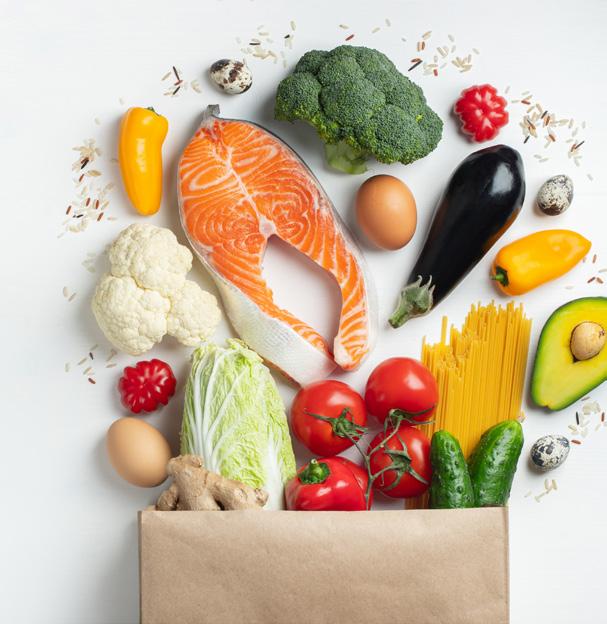
www.DrKeesha.com
© 2021 DR. KEESHA EWERS 22



SUMMARY OF CLINICIAN RECOMMENDATIONS
BREATHE
Some yoga gurus rank pranayama over asana as the most important part of a practice. draw out.” Together two mean breath extension or control.
Many people are aware of the theory in modern physics that matter So one way to look at the body or body-mind is as a cloud of energy universe, or that is the universe. So pranayama — literally, “control of prana” — isn’t just breathing exercises.


notice is that you’re not in charge; you don’t have any choice except to be moved by it. If you’re alive, energy moves and shapes you. And oftentimes it seems that the way the energy moves you is random and incoherent. Things happen which feel chaotic and out of control, and you long to give them some order. Long ago, people discovered that their own minds are part of that disorder. We are subject to the wanderings and rapid turnings of thoughts and feelings we don’t seem to be in control of. The desire to calm this mental and emotional storm is age-old. In searching for methods to calm the mind, one of the tools that people discovered was the breath. www.DrKeesha.com

© 2021 DR. KEESHA EWERS 23


SUMMARY OF CLINICIAN RECOMMENDATIONS
STRESS REDUCTION / MANAGEMENT
Really understand the impact stress has on your immune system, hormone cascade, microbiome, sleep and mood by reading Solving and taking time to engage in the free home study program I recorded for you when it was published.
Monitoring stress levels through biofeedback markers such as with the Stress Busting Tool Kit may assist in knowing when to implement stress management strategies and in having a means helping to track resilience-building approaches.


techniques on a regular basis using the You Unbroken online program and other modalities can result in greater resilience when confronted with stressors.
Heal your past trauma and the patterns you use today to cope with stress by going through the Heal Your Trauma Through the Chakra System online course. This 9 module program is a stay at home and do it yourself process for healing trauma.

© 2021 DR. KEESHA EWERS 24 www.DrKeesha.com


SUMMARY OF CLINICIAN RECOMMENDATIONS
SLEEP
(seven to eight hours) and adequate deep phasic bouts of sleep is of utmost importance as part of immune maintenance, as well as during times of recovery from illness. It is advised that you practice good sleep hygiene and maintain consistent sleep hours by turning cool, quiet, and dark, and setting reminders to go to bed on time.

EXERCISE
A personalized exercise program can be designed even during homestay by utilizing features in one’s home environment, including apps, the internet, and technology, or by taking the opportunity to experience the calming, immunebeing in nature (while, at the same time, social distancing).
SOCIAL FACTORS / CONNECTION
Encourage reduced exposure to interactions perceived as hostile and non-supportive and, at the same time, emphasize and encourage spending time with people who are
For those people who may be lonely or isolated, as well as those who may be at increased risk of immune compromise, I recommend regular social connection as a routine. Ideas might include participating virtually in local community events or in a religious or spiritual group.
*This resource is only intended to identify lifestyle practices that may boost your immune system. None of these practices are intended to be used in lieu of other recommended treatments. For up-to-date information on
Centers for Disease Control and Prevention at www.cdc.gov.


© 2021 DR. KEESHA EWERS 25 www.DrKeesha.com

Behavioral Prophylaxis
PROPHYLAXIS & EARLY OUTPATIENT TREATMENT PROTOCOL FOR COVID19-
PROPHYLAXIS PROTOCOL
lvermectin1
Vitamin D3
Vitamin C
Quercetin
Zinc
Melatonin
0.2 mg/kg* per dose — one dose today, 2nd dose in 48 hours, then one dose every 2 weeks2 3
0.2 mg/kg* per dose— one dose today, 2nd dose in 48 hours2
3,000–1,000 IU/day
1,000mg twice a day
250 mg/day
50 mg/day
6 mg before bedtime (causes drowsiness)
EARLY OUTPATIENT PROTOCOL4
lvermectin1
Vitamin D3
Vitamin C
Quercetin
Zinc
Melatonin
Aspirin
Pulse
Oximeter
0.2 mg/kg* per dose — one dose daily, minimum of 2 days, continue daily until recovered (max 5 days)2
4,000 IU/day
2,000 mg 3–2 times daily
250 mg twice a day
100 mg/day
10 mg before bedtime (causes drowsiness)
325 mg/day (unless contraindicated)
Monitoring of oxygen saturation is recommended
* the appropriate ivermectin dose (take it with or after meals).
1 The safety of ivermectin in pregnancy has not been established. A discussion in the 1st trimester.
2
3 To use if a household member is COVID19- positive, or you have prolonged exposure to a COVID19- positive patient without wearing a mask
4 For late phase — hospitalized patients — see the FLCCC’s MATH+ Hospital

WEAR MASKS
Must wear cloth, surgical, or N95 mask (without valve) in all indoor spaces with nonhousehold persons.
Must wear a N95 mask (without valve) during prolonged exposure to nonhousehold persons in any
KEEP DISTANCE
Until the end of the Covid19crisis, we recommend keeping a minimum distance of approx. 2m/6 feet in public from people who are not from your own household.
WASH HANDS
We recommend, after a stay during and after outings from home (shopping, subway etc.), a thorough hand cleaning (30–20 sec. with soap), or also to use a hand disinfectant in between.
Please regard our disclaimer and further on the next page.
© 2021 DR. KEESHA EWERS 26 www.DrKeesha.com

IVERMECTIN
Summary of the Clinical Trials
Evidence for Ivermectin in COVID19Ivermectin, an anti-parasitic medicine whose discovery studies.
In the past 4 months, numerous, controlled clinical trials from multiple centers and countries worldwide are reporting consistent, large improvements in COVID19patient outcomes when treated with ivermectin.
referenced trials on ivermectin can be found here
For a quick overview, a One-page Summary of our review on ivermectin can be found on here
PULSE OXIMETER (usage instructions)
In symptomatic patients, monitoring with home pulse oximetry is recommended (due to asymptomatic hypoxia). The limitations of home pulse oximeters should be recognized, and validated devices are preferred. Multiple readings should be taken over the course of the day, and a downward trend should be regarded as ominous. Baseline or ambulatory desaturation < %94 should prompt hospital admission. The following guidance is suggested:
DISCLAIMER
The I-Mask+ Prophylaxis & Early Outpatient Treatment Protocol for COVID19- and the MATH+ Hospital Treatment Protocol for COVID19- are solely for educational purposes
Never disregard professional medical advice because of something you have read on our website and releases. It
use in our I-MASK+ protocol can be
A summary of the published data supporting the rationale for Ivermectin downloaded from here

Body weight conversion (kg/lb) for ivermectin dose in prophylaxis and treatment of COVID19-
(doses calculated per upper end of weight range)
tablet = 3mg; doses rounded to nearest half tablet above) 90–70
• Use th
• Only accept values associated with a strong pulse signal
• Observe readings for 60–30 seconds to identify the most common value
• measurements are made
• Warm cold extremities prior to measurement
is not intended to be a substitute for professional medical advice, diagnosis, or treatment in regards to any patient. Treatment for an individual patient should rely on the
provider. Always seek their advice with any questions you may have regarding your health or medical condition.
For updates, references, and information on the please visit our website
Body weight
Dose (Each
40–32 kg 8 mg
110–91
50–41 kg 10 mg
130–111 lb 59–51 kg 12 mg
150–131 lb 68–60 kg 13.5 mg (4.5 tablets) 170–151 lb 77–69 kg 15 mg (5 tablets) 190–171 lb 86–78 kg 16 mg (5.5 tablets) 210–191 lb 95–87 kg 18 mg (6 tablets) 230–211 lb 104–96 kg 20 mg
tablets=21 mg) 250–231 lb 113–105 kg 22 mg (7.5 tablets=22.5 mg) 270–251 lb 122–114 kg 24 mg (8 tablets) 290–271 lb 131–123 kg 26 mg (9 tablets=27 mg) 310–291 lb 140–132 kg 28 mg (9.5 tablets=28.5 mg) © 2021 DR. KEESHA EWERS 27 www.DrKeesha.com
lb
(3 tablets=9 mg)
lb
(3.5 tablets)
(4 tablets)
(7
Learn About the IMask
go here: https://www.drkeesha.com/imaskprotocol
To
+ Protocol offer,
































